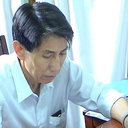Inhibitory efficacy of hypoxia-inducible factor 1alpha short hairpin RNA plasmid DNA-loaded poly (D, L-lactide-co-glycolide) nanoparticles on choroidal neovascularization in a laser-induced rat model.
Keywords
Abstract
The aim of this study was to evaluate the possibility of poly (D, L-lactide-co-glycolide) nanoparticle (NPs) as a gene vector for functional plasmid DNA (pDNA) and to investigate its inhibitory efficacy on experimental choroidal neovascularization (CNV). We developed intravitreal administered, hypoxia-inducible factor 1alpha (HIF-1alpha) short hairpin RNA and green fluorescent protein (GFP) co-expressed pDNA-loaded NPs (pshHIF-1alpha NPs). CNV was induced by laser photocoagulation in 112 rats. The rats were then randomly assigned to be injected intravitreally with phosphate-buffered saline (PBS), blank NPs, naked pDNA, control pDNA NPs and pshHIF-1alpha NPs, respectively, and non-injection group was set as the control. Immunofluorescence staining, fluorescein fundus angiography and histologic analysis were performed to evaluate the inhibitory efficacy on CNV. The results showed that the expression of GFP preferentially localized in the retinal pigment epithelium cell layer and lasted for 4 weeks. The fluorescein leakage areas of CNV were significantly larger in the PBS, blank NPs, control pDNA NPs, non-injection group and naked pDNA group than in pshHIF-1alpha NPs group (P<0.01). The mean thickness of the CNV lesions in the intravitreally pshHIF-1alpha NPs-treated group was significantly smaller than other groups (P<0.01). No signs of functional or ultrastructural destruction in retina were detected. Therefore, pshHIF-1alpha NPs may act as a novel therapeutic option to transfer specific pDNA and inhibit the formation of experimental CNV.



